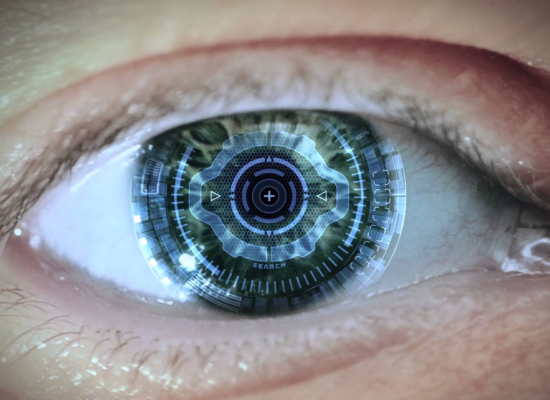EYESIGHT PROBLEMS
IGNORING THE PROBLEM
If you ignore the problem, your child can become quite unhappy because playmates, neighbors and children at school and later people at work think poorly of them. Because they are different, people can think they are stupid. This means they:
- Can’t get things done on time.
- Will do things the wrong way.
- Will just forget to do things.
- Instead of becoming a loved and respected person at home or school, they become an everyday burden on the parents.
- Shopping with them becomes a difficult task for parents since the child may take a long time to decide if they like something or put it in a shopping bag.
- They fidget and take extra time to respond to a question from another student or teacher.
- They forget even simple directions such as going to another classroom.
- They forget the numbers for the locker in school.
- They may completely forget outside weather conditions and find themselves in torrid or freezing conditions and not realize it.


FIND A CHILD’S HIDDEN TALENTS
- Many children despite their ailment or combination of ailments, have amazing talents and have gone on to become recognized scientists, painters, actors, writers, NOBLE PRIZE winners, and college professors. [i] Any such list will include names like Nikili Tesla, Alexander Grahm Bell, Albert Einstein, Leonardo De Vinci, Susan Boyle, Carol Greider, and Dan Aykroyd.
- Your child may have an amazing future but much depends on how you encourage him every day and how you show this encouragement frequently. Frequently means 8 to perhaps 12 times over a day. This expression of love and interest can be in a few well-chosen words, a hug, and a squeeze, or sitting next to your child and helping him to read or perhaps learning a song or helping him draw a picture. Pulling out and sharing some jello, pudding, ice cream, a piece of fruit, or chocolate candy is also a good tactic.
EYEGLASSES
The most common issue with getting glasses is fitting your child. Some children are very athletic so rugged frames are a good choice. Other children are picky when it comes to the frame style, color, design, etc. Remember you will be buying at least one pair and may also have to buy sunglasses.
What are the glasses doing in your child’s day-to-day life? They should make reading much easier which makes school work, homework assignments and using a cell phone and reading a PC screen readable.
Everybody’s eyeballs are not just round. The have both a front and back, and a transparent section (cornea). The cornea shapes the beam of light so it hits the back of the eye the exact spot to be read and sent to the brain. As we grow up, the shape of the eye changes so that we need glasses to recenter that beam of light and sometimes magnify what we are reading.


EYE AILMENTS
Sometimes the brain itself has gotten squeezed or twisted, perhaps by the mother’s use of tobacco, alcohol, or recreation drugs like marijuana. In a few cases there may be a genetic problem or some difficulty in birth. The most complex ailment is DYSLEXIA. Other, oft related problems include ADHD, and AUTISM (autism spectrum disorder or ASD). [ii] These three ailments are discussed below.
- DYSLEXIA
This learning disorder is caused by differences in how one’s brain identifies speech sounds, and learning how these sounds match to letters and words. Dyslexia is not related to a person’s intelligence, hearing, or vision. Yes, a child may need glasses or hearing aids at some time, but that has little to do with dyslexia.
Clues to possibly having dyslexia include talking late, slowly learning new words, confusing words, or reversing the sound of a word. Other problems may occur such as a child having difficulty in remembering letters, numbers, or nursery rhymes or needing an unusually long time to do reading or writing assignments. These signs may become more apparent as a child grows older Having difficulty in learning a foreign language or doing math word problems may also appear. These signs of dyslexia may become more apparent as a child grows older. Tutoring or a special education program given in a supportive atmosphere can often be very helpful in solving this problem.
Dyslexia is often genetic but may come from or be made worse by a child’s polluted water, air, or even food. It is also possibly due to the mother’s use of drugs, alcohol, tobacco, or marijuana while pregnant.
- AUTISM (ASD)
Autism spectrum disorder is a developmental disorder with symptoms that appear within the first three years of life. The word “spectrum” indicates that autism appears in different forms with varying levels of severity. Each individual with autism experiences their own unique strengths, symptoms, and challenges. Understanding more about ASD can help you better understand the individuals who are living with it. They can exhibit none, some or more serious symptoms including:
a) Markedly reduced eye contact,
b) Differences in body language,
c) Shows few facial expressions,
d) The child shows no imagination in playing,
e) The child often repeats gestures or sounds,
f) The child has closely focused interests, and
g) The child is indifferent to temperature extremes.
- ADHD
ADHD (attention-deficit/hyperactivity disorder) has a distinctive set of conditions. Like autism, ADHD is classed as a specific learning disorder. Like other ailments, it may range from trivial to quite serious. Your child can have ADHD, autism, and DYSLEXIA at the same time. However, they’re also independent of each other. That is having one of these ailments does not mean it caused another. It appears that 1 in every 54 children may suffer from ADHD.
For more information on BLOGS you can read, go your browser and look for the AMAZON site at www.henryhpetersohn.com
One can see the names and achievements of famous people who had one or several of these ailments at the same time by going to the browser on your computer and entering:
a) famous people with DYSLEXIA or,
b) famous people with AUTISM or,
c) famous people with ADHD. In each case, the ailment could range from trivial to serious.
This information comes from several sources, each of which provides a slightly different view and discussion of these problems. The sources include the Cleveland Children’s Clinic and the Mayo Clinic. the Hopkin’s Wilmer Eye Center, Boston’s Leahy Clinic, UCLA’s Stein Medical Institute, and the NIH National Eye Institute.

